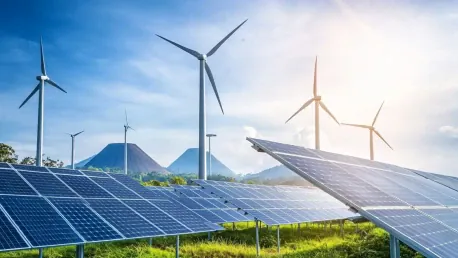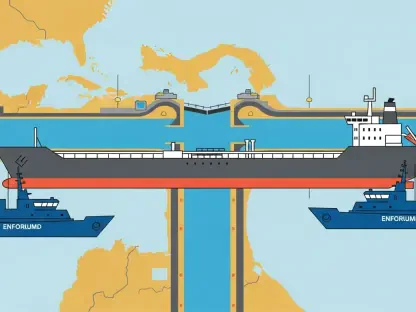Indonesia’s plan to phase out coal by 2040 presents significant challenges and opportunities for the country’s energy sector. President Prabowo Subianto has set a bold target to eliminate coal, a particularly ambitious goal for a nation where 62% of electricity is generated from coal. As his administration embarks on its first 100 days, there is a pressing need for a detailed and feasible plan to meet this objective.
The Current Energy Landscape
Heavy Reliance on Coal
Indonesia’s energy sector is heavily reliant on coal, with 62% of its electricity generated from this fossil fuel. This historical dependence poses a significant challenge to the country’s decarbonization goals. The recently published National Electricity Master Plan (RUKN) 2024-2060 reveals contradictions between phase-out strategies and the need for accelerated renewable energy adoption. The country’s reliance on coal has been a double-edged sword, underpinning economic growth while contributing significantly to its carbon emissions.
The challenge lies not only in shifting the energy mix but also in transforming the economic structure that supports the coal industry. Coal mining and related activities are major sources of jobs and revenue in Indonesia. Transitioning away from coal will require comprehensive strategies that address these socio-economic factors. This transition must be managed carefully to mitigate the impact on communities and workers dependent on the coal sector.
Contradictions in the Master Plan
The RUKN 2024-2060 includes strategies such as co-firing with biomass and retrofitting coal plants with carbon capture technology. However, these measures may not align with the country’s decarbonization goals, which necessitate a faster transition to renewable energy sources. Addressing these contradictions is crucial for a successful coal phase-out. While technologies like carbon capture and biomass co-firing can reduce emissions, they do not eliminate them, thus potentially hindering full decarbonization.
The effectiveness of these technologies in the Indonesian context is also a concern. Biomass availability and carbon capture infrastructure are still in nascent stages, necessitating substantial investment and development. Additionally, there is the overarching issue of financial viability and whether these technologies can compete with rapidly declining costs of renewables. Resolving these contradictions requires clear policy direction and prioritizing indigenous renewable resources.
Strategies for Phasing Out Coal
Creating a Blueprint for Retiring Coal Plants
A critical step in phasing out coal is creating a blueprint for retiring high-emission coal power plants. This includes addressing captive coal plants, which are off-grid and could remain unregulated, undermining climate goals. Revising existing contracts between PLN, the state electricity company, and power producers is also essential to reduce coal power operations. These contracts often mandate the purchase of fixed amounts of coal-generated electricity, limiting the integration of renewables.
Revising or renegotiating these contracts could free up capacity for renewable energy sources, allowing a more flexible energy grid. Moreover, a detailed retirement plan should consider the economic and social impact on regions dependent on coal power plants. Equally important is ensuring that retired plants are replaced with adequate renewable capacity to maintain energy security and meet growing electricity demands.
Enhancing Operational Flexibility
For renewable energy to take precedence on the grid, coal plants must improve their downward flexibility—the capacity to quickly reduce their output when renewable sources are available. This requires investment in upgrades and new operational practices to ensure coal plants do not obstruct renewable energy growth. Enhancing flexibility also entails upgrading grid infrastructure to manage variable renewable output effectively. By improving grid management and integrating smart grid technologies, Indonesia can create a more resilient and adaptable energy system.
Additionally, training and reskilling the existing workforce would be necessary to manage and operate a more sophisticated energy grid. These measures could also create new employment opportunities in the renewable sector, offsetting some of the job losses from retiring coal plants. Balancing these aspects is crucial for maintaining social equity and economic stability during the transition.
Accelerating Renewable Energy Deployment
Increasing Renewable Energy Share
Meeting the 2040 coal phase-out target requires increasing renewable energy to 65%. In one proposed scenario, solar would contribute 20%, wind 11%, and other renewables—including nuclear, geothermal, bioenergy, and hydro—would constitute 34%. This plan includes 68 GWh of battery capacity to stabilize solar energy output. Solar and wind energy show tremendous potential given Indonesia’s geographic advantages, with abundant sunlight and wind corridors suitable for large-scale installations.
Battery storage is pivotal in balancing the intermittency of renewables, ensuring reliability and continuity of supply. Integrating storage solutions will require not only advanced technology but also supportive policies and financial mechanisms to make them economically viable. Encouraging private investments in renewable projects through appropriate incentives and regulatory frameworks would accelerate this transition.
Financial Support and Incentives
Financial support for the early retirement of coal power plants is indispensable. The government must collaborate with plant owners, financiers, and international partners to develop funding solutions. This could involve climate finance, carbon markets, and public-private partnerships. Mobilizing these resources will facilitate the coal phase-out and bolster renewable energy projects. International financial institutions and climate funds can play a crucial role in providing the necessary capital and risk mitigation measures.
Creating favorable investment conditions, such as tax breaks and low-interest loans for green projects, would also attract domestic and foreign investments. Additionally, a well-defined regulatory framework ensuring transparency and long-term stability is essential to build investor confidence, further encouraging the growth of renewable energy infrastructure.
Addressing Policy and Regulatory Challenges
Revising Tariff Policies
Current policies offer minimal incentives for incorporating battery storage into solar projects. For instance, Presidential Regulation 112 imposes a tariff cap on battery storage charges that may not cover infrastructure costs. Revising these policies is crucial to encourage the integration of battery storage and support renewable energy growth. Revising tariff policies to reflect real costs and provide adequate returns on investment is essential to incentivize further development.
A robust regulatory framework needs to be established to ensure fair access and streamline approval processes for renewable projects. This regulatory clarity can reduce the uncertainties that often deter investors, leading to smoother project implementations and faster scaling of renewable installations.
Strengthening Private Sector Involvement
Strengthening private sector involvement in the electricity market could unlock substantial financing for the clean energy transition. Indonesia can look to neighboring Southeast Asian nations like Vietnam, Malaysia, and Thailand, which have introduced policies allowing direct procurement of renewable energy by companies. Adopting similar regulations could enable industrial clients to purchase clean electricity directly. This can significantly enhance the renewable energy sector’s growth by creating a stable demand base.
Moreover, enabling corporate power purchase agreements (PPAs) and other innovative financing mechanisms can provide a predictable revenue stream for renewable energy developers. Facilitating collaborations between private enterprises and government bodies can also harness the agility and innovation of the private sector while providing the regulatory support necessary for long-term sustainability.
Economic and Environmental Benefits
Job Creation and Green Investments
Expanding renewable energy deployment promises significant economic benefits for Indonesia, including job creation and attracting green investments. Transitioning to renewable energy sources like solar, wind, geothermal, and hydro can not only diversify the energy mix but also create numerous local job opportunities in manufacturing, installation, maintenance, and other ancillary sectors. Decisive action now will ensure long-term economic growth, environmental stability, and energy security.
Furthermore, green investments can position Indonesia as a regional leader in sustainable energy, attracting multinational companies and fostering innovation in clean technologies. These developments can also boost other sectors such as transport, construction, and services, creating a ripple effect across the entire economy.
Sustainable Power Sources
Indonesia’s ambition to phase out coal by 2040 presents both formidable challenges and significant opportunities for the country’s energy sector. President Prabowo Subianto has set a bold target to eliminate coal entirely, a particularly ambitious goal for a nation where 62% of its electricity is currently generated from coal. This shift marks a major transition, especially as his administration embarks on its first 100 days in office. Achieving this objective will require a detailed, actionable, and realistic plan. Indonesia will need to ramp up investments in renewable energy sources like solar, wind, and hydro power. Additionally, the country will have to address potential job losses in the coal industry by creating new employment opportunities in the renewable energy sector. This energy transition also necessitates significant changes in infrastructure, requiring substantial financial backing and international cooperation. While the path forward is fraught with difficulties, it presents a unique chance to position Indonesia as a leader in sustainable energy in Southeast Asia.









